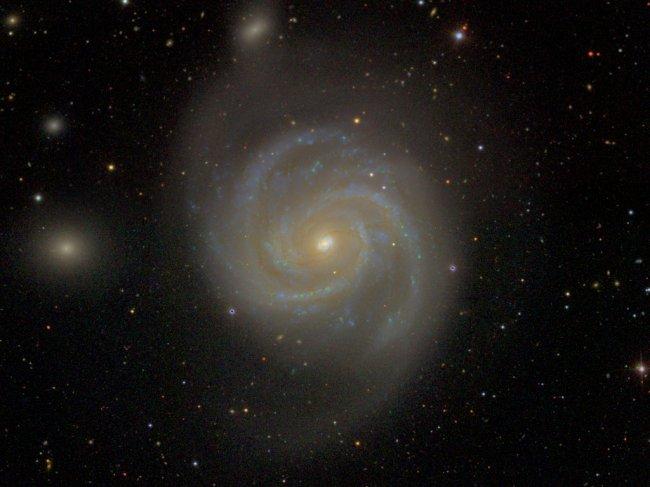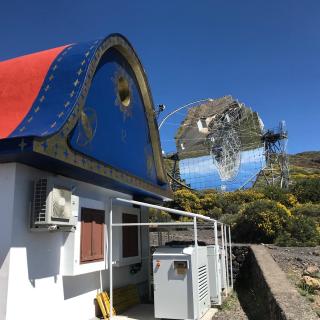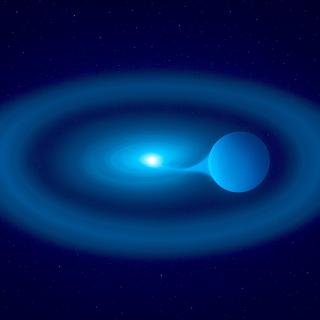In a study just published in the Astrophysical Journal Letters whose first author is Fatemeh Tabatabaei (IAC), a group of scientists mainly from the IAC has found significant evidence that the strength of the large scale magnetic field in a galaxy depends on the rotation velocity, or on the internal motions of its material. These results show that the behaviour of these large scale magnetic fields cannot be explained using a linear interpretation of the present day dynamo theory.
The dynamo theory, the most popular way to explain the magnetic fields in stars and planets, describes the process by which an electrically conducting fluid, influenced by rotation and convection, can generate a magnetic field on astronomical timescales. In galaxies a similar process could take place, which would maintain a uniform magnetic field. But the proofs of the theory for galaxies are few, and work has been concentrated on the detection and mapping of the magnetic field in individual galaxies, assuming that the theory works in the same way.
Looking for an observational proof, the IAC researchers have opted to test the theory using a sample of isolated galaxies, those which are not members of a cluster of galaxies, nor are perturbed by interactions between galaxies. This comparison shows a correspondence between the large scale magnetic field and the velocity of rotation of a galaxy. The theory suggests that the magnetic field should increase with time in rotating galaxies. However the evidence in the article is that the magnetic field stops evolving once the dynamical mass of a galaxy is fixed.
These results throw some light on the problem of how the universe works, as this cannot be understood without taking into account magnetic fields, The origin and the evolution of these fields is one of the outstanding problems of modern astronomy, because they are needed to account for the continuity of life on Earth, to explain the details of star formation, to understand the organization of the interstellar medium, and the evolution of the galaxies themselves, However the possible contribution of the dynamo mechanism to explaining how the galaxies obtained their magnetic fields is a question which needs direct study in distant galaxies, those at high redshift.
Article: “An empirical relation between the large-scale magnetic field and the dynamical mass in galaxies”, by Fatemeh Tabatabaei (IAC), T. P. K. Martinsson, (IAC) J. H. Knapen (IAC), J. E Beckman (IAC-CSIC). ; B. Koribalski, Australian NatIonal Telescope Facility), B,G, Elmegreen, (IBM Watson Research Center), Astrophysical Journal Letters, 818, L10, 2016.
http://dx.doi.org/10.3847/2041-8205/818/1/L10
Contact:
Fatemeh Tabatabaei: ftaba [at] iac.es (ftaba[at]iac[dot]es) and +34922605539



